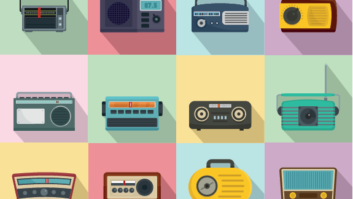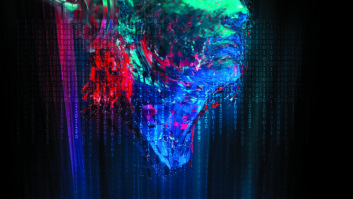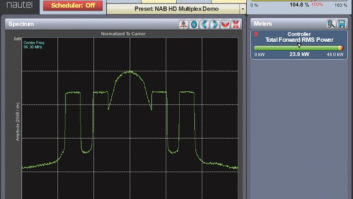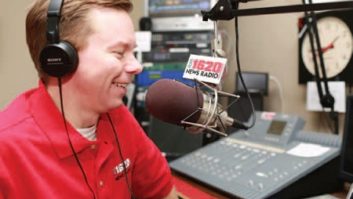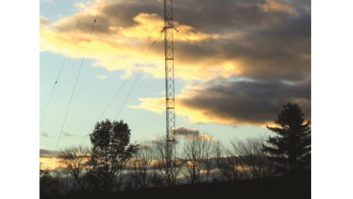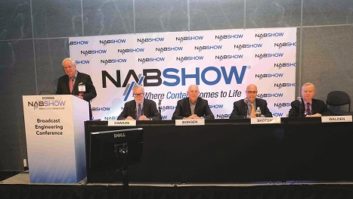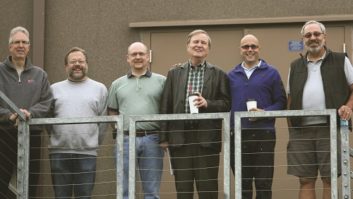
More than 20 SBE Chapter 37 engineers turned out to hear an update on NAB Labs all-digital AM testing. The meeting was at Hubbard’s historic transmitter site in Wheaton, Md. Note the glass block in the background. Also note, Rich Rarey, Radio World Engineering Extra’s new tech editor in the front row with the light blue shirt, holding a notebook. Credit: Photo by Leslie Stimson
Now that field tests are done for all-digital AM HD Radio, NAB Labs is concentrating on report writing, lab tests and allocation studies.
“We’ve been in touch with the FCC all along” on the AM all-digital testing, says NAB Technology Senior Director Advanced Engineering David Layer. “We hope the data we’re providing will be enough” for the commission to make a decision on whether to authorize station use of the technology.
NAB Labs has conducted tests on nine AMs, we’ve reported. The most recent tests occurred in Seattle, the largest test market to date on two 50 kW AMs, KRKO and KKXA. Proponents say the all-digital AM signal is more immune to noise and interference than both the current hybrid system and analog.
But while all-digital AM can be received on HD Radio tuners in the marketplace, the signal cannot be received on analog radios. Layer believes more HD Radio receivers will come into the market as car radios. IBiquity Digital projects 50% of new vehicles sold in the U.S. this year will include HD Radio, and the technology will become the norm in a few years.
However, while coverage of the all-digital AM signal exceeds that of the current hybrid system, it’s dependent on upon co- and adjacent channel interference, Layer told attendees of the SBE Chapter 37 meeting on Wednesday evening. Cavell Mertz is conducting co-channel interference studies on the all-digital AM signal, he adds.
If approved by the FCC, Layer believes the commission would authorize all-digital AM for daytime use first, as the agency did with the hybrid system, and authorize nighttime later, meaning stations would still transmit an analog signal at night. That’s because nighttime performance is impacted by skywave propagation. “If the commission authorizes all-digital for daytime first, the industry will have a lot of opportunity to figure this out,” says Layer.
He anticipates a field test report would be published in the 2015 NAB Broadcast Engineering Conference proceedings.
More than 20 engineers attended the SBE Chapter 37 meeting, held at the WFED(AM) transmitter site in Wheaton, Md. Several WTOP(FM) and Federal News Radio (WFED) engineers conducted tours of the historic site, including CE Dave Garner, Assistant CE Art Rose and Senior Broadcast Engineer Dave Kolesar. The site dates from the late 1920s, when what was then called WJSV (now WTOP) was on the air. WTOP used to be an AM but switched to FM in 2006 and created WFED for its former 1500 kHz allocation.
Washington architect E. Burton Corning designed the Wheaton facility in 1939 and it was completed early in 1940. Today, WTOP’s transmitter is in Washington at American University and the Wheaton site is the main transmission site for WFED and serves as a back-up for WTOP.
Radio One Washington cluster CE Kent Kramer chairs SBE Chapter 37 and Broadcasters General Store sponsored the meeting.





